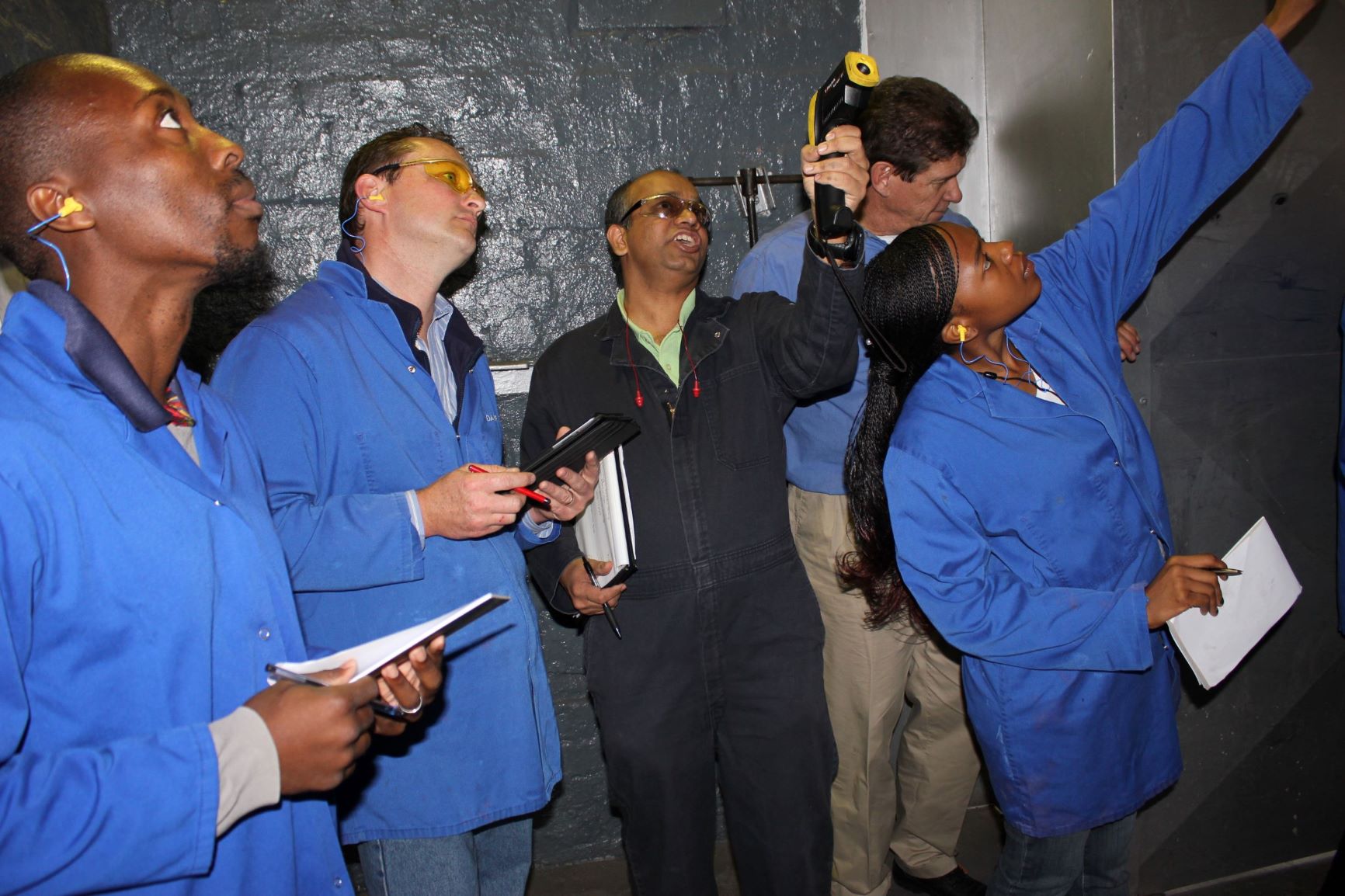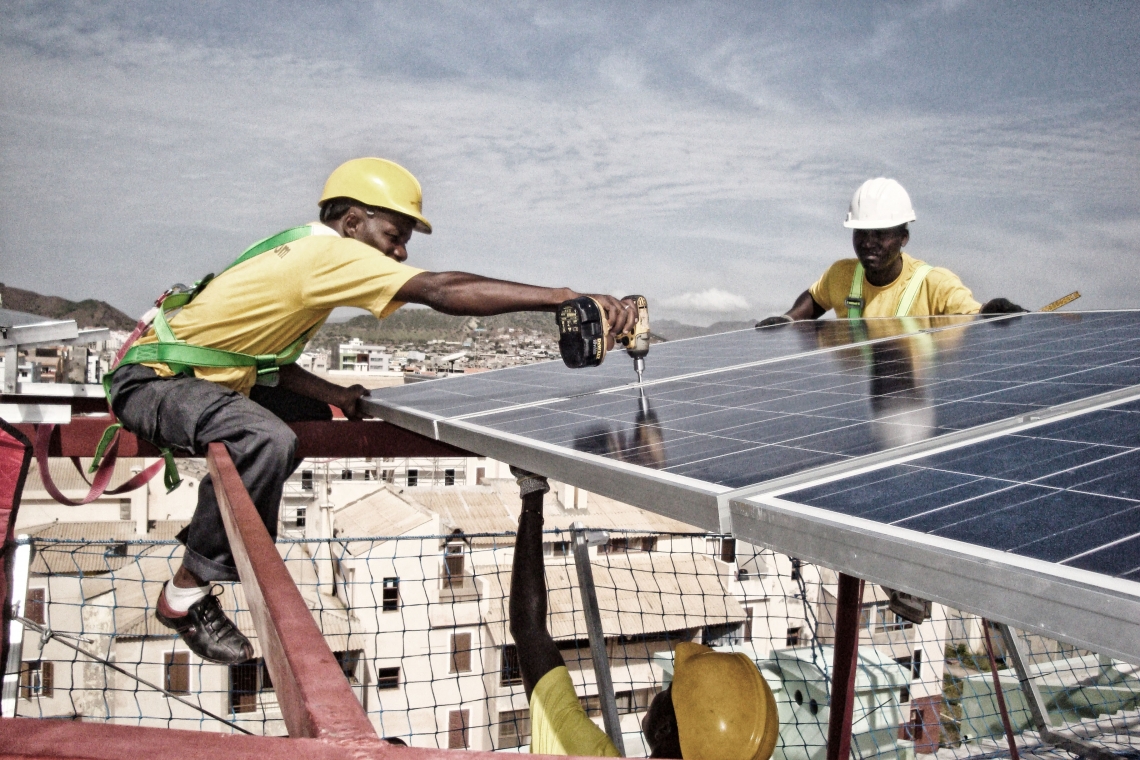From renewables to efficiency: Financing South Africa’s energy transition
Over the past decade coal dependent South Africa has steadily fostered a thriving market for clean energy generation. By 2050, according to the government’s recently released energy plan, renewables are forecast to make up the vast majority of the country’s electricity mix as prices continue to fall. This is significant considering as recently as the year 2010, renewable energy contributed less than 1 per cent of all energy sources in South Africa.
One person who has had a front row seat in South Africa’s green energy transition is Nadia Rawjee, the Executive Director of industrial financial consulting firm Uzenzele Holdings. “Ten years ago if you told an industrialist that you can utilize solar photovoltaic (PV) cells to supplement power generation, they would look at you with square eyes,’” explained Nadia from her office in Johannesburg.

Nadia Rawjee’s consultancy, Uzenzele Holdings, focuses on business development and accessing governmental funding for business expansion projects. The company uses its expertise to help clients navigate the complex process of applying for government and developmental funding, helping to unlock funds and opportunities that many entrepreneurs aren’t aware of.
Despite the excitement in the country’s renewable energy generation market, investment into industrial energy efficiency is yet to be taken seriously. However, Nadia says that interest in energy efficiency is growing. “Our primary focus has always been on energy generation, as opposed to efficiency. But the efficiency element is becoming more prevalent. I think people are starting to understand it a bit better.”
According to Nadia, the country’s notorious energy insecurity woes actually play well when it comes to promoting industrial energy efficiency investment. Persistent load-shedding, otherwise known as blackouts, greatly increases industrial operating expenses due to delays, unexpected production stoppages and expenses from backup diesel generators. Last year blackouts were estimated to have reduced South Africa’s GDP by roughly 0.30% in 2019, the equivalent to R8.5bn of real GDP (roughly USD 500 million). In December 2019 alone, South Africa’s manufacturing production was estimated to have decreased by 5.9 per cent due to severe power shortages.
“We’re finding that businesses are open to the energy efficiency investment discussion. At the end of the day they have to find solutions. We have lots of load-shedding incidents in the country at the moment and that really does impact business. An entire batch can go to waste. So with that being a reality, businesses are becoming more open to energy conservation and related investments,” explains Nadia.
“I see energy efficiency tracking the progress and acceptability of solar PV, perhaps just 10 years behind,” explains Nadia.
However there are still a number of specific barriers, particularly when it comes to financing, which must be overcome. These range from a general lack of awareness of existing financial incentives which could be adapted for energy efficiency projects, the scalability of bankable technology as well as the over complication of some financial products currently designed for energy efficiency financing. Below are five key areas of improvement Nadia believes are critical to accelerating South Africa’s energy efficiency market.
1) Improve awareness of existing financing opportunities
The awareness of the different types of funding for energy efficiency is lacking in South Africa. In general, with any type of financial product, it’s very difficult for business owners and decision makers within industry to have access and awareness to the granular sector specific funding opportunities and incentives. Take for example small businesses that are turning over under one million dollars. They often don’t even have the time to think about energy conservation, nevermind figuring out what is the appropriate type of funding. As you go up the value chain of businesses you find different issues regarding awareness and a lack of appetite to actually take the time to truly understand these financing opportunities.
One great financing opportunity that industrial organizations can capitalize on right now is the 12L Tax incentive, which is specifically designed for energy efficiency. It allows industrial organizations to deduct 95c/kwh saved on energy consumption.
2) Be creative when it comes to financing structures
Start making use of the various business incentives and structures in a holistic way. For example, there is already a tax incentive for renewable power generation, there’s a tax incentive for energy efficiency and there are grants available for machinery, tools and equipment. There are also initiatives such as the Black Industrialists (BI) scheme which provides grants to black-owned and managed businesses for expansion projects. Let’s say your firm needs to invest in a piece of equipment valued at USD 3million. In fact, 50 per cent of the cost of that equipment could be grant funded if it includes a solar PV solution. Now over and above that, if the new piece of equipment actually provides energy savings, then you could also implement section 12L of the income tax act. In the end, investing in a more efficient piece of equipment may have a higher upfront cost, but in the long-run it is likely to be more cost effective if you make use of all of the investment incentives on offer.
3) Invest in quality monitoring and evaluation
Energy savings, emissions and other related data monitoring may cost your business more upfront. But again, provided that you have the cash flows, if you balance that upfront investment with the tax savings you will make, it simply comes down to good business decision making in the long-run.
It therefore goes without saying that more qualified monitoring and evaluation specialists are needed in South Africa to support the emerging energy efficiency services market. Without accredited and reliable data it’s very difficult for industrial organizations to attract and apply for financing incentives.

UNIDO’s Faith Mkhacwa conducts a boiler assessment at the Rhodes Food Group in the Western Cape as part of the steam systems expert-level training. Credit: NCPC-SA
4) Simplify EE investment products
At the moment I think applicants are over complicating financing applications, especially when the financial sector is still getting its head around this nascent market. Currently in South Africa there are massive challenges with “pay for performance” based contracts, or “power purchase agreements” for energy efficiency. There is a high perception of risk surrounding these types of financing tools, particularly from the energy users perspective and therefore the financiers. Instead we are finding that financing institutions prefer to support energy efficiency projects that are simply packaged as an asset financing solution. This works well if the investment is as simple as an equipment upgrade. In this case it’s up to the company to worry about the technicalities of achieving energy cost savings. As far as the financial institution is concerned, the investment is as simple as upgrading to a more efficient motor, for example. It therefore becomes a lot more tangible and less abstract.
5) Promote real world successes and pilots
When it came to solar PV we found if businesses had a series of compelling pilot projects to refer to they quickly realized the investment benefits and were willing to investigate the opportunity further. Companies want to be certain that the technology works so it’s important to be able to showcase that it does. The same can be said for energy efficiency projects.
Unfortunately, some companies aren’t always willing to share their experiences. They often hold their energy saving successes close to their chest because they view it as a competitive advantage and don’t want their competitors knowing about it. I think that is why organizations like UNIDO are so critical at this early stage of market development. They help to establish a proof of concept for certain technologies. Being able to leverage case studies from other countries, where competition between firms may be less of an issue, is a great value add which UNIDO can provide. This allows advisors like myself to use these examples when we engage with our clients and funding partners.
|
UNIDO’s Financing for Energy Efficiency Series Throughout the month of November, the Accelerator is sharing a series of interviews which explore the barriers and solutions for financing energy efficiency in key industrial countries. Through this series, the Accelerator hopes to inspire and equip industry practitioners to take the first step towards achieving better energy results. Read also our interview with India’s Energy service (ESCO) business owner, Milind Chittawar, and the recommendations shared by Egyptian banker and finance consultant, Hoda Sabry. Read more about how the Accelerator is working to mobilise finance and investment for industrial energy efficiency: Our work |
